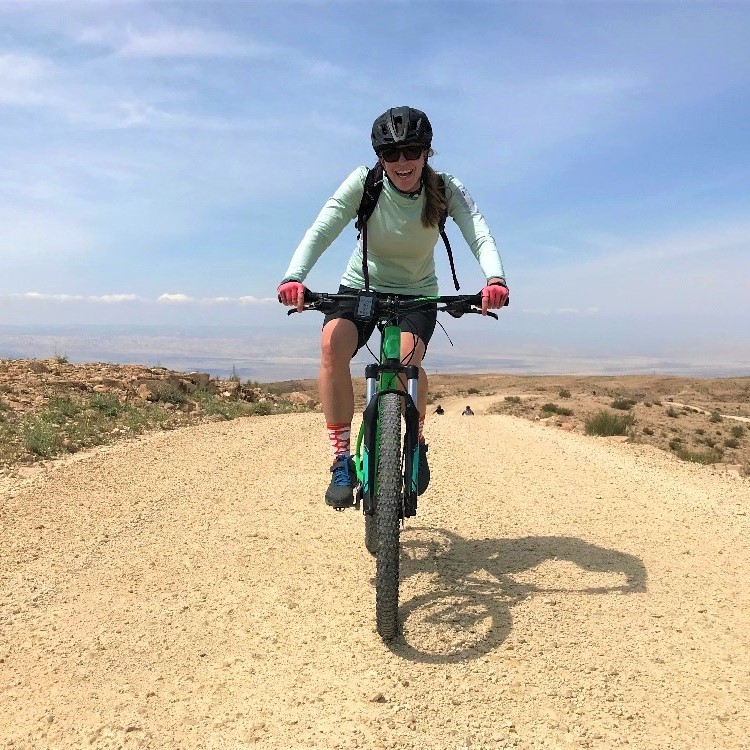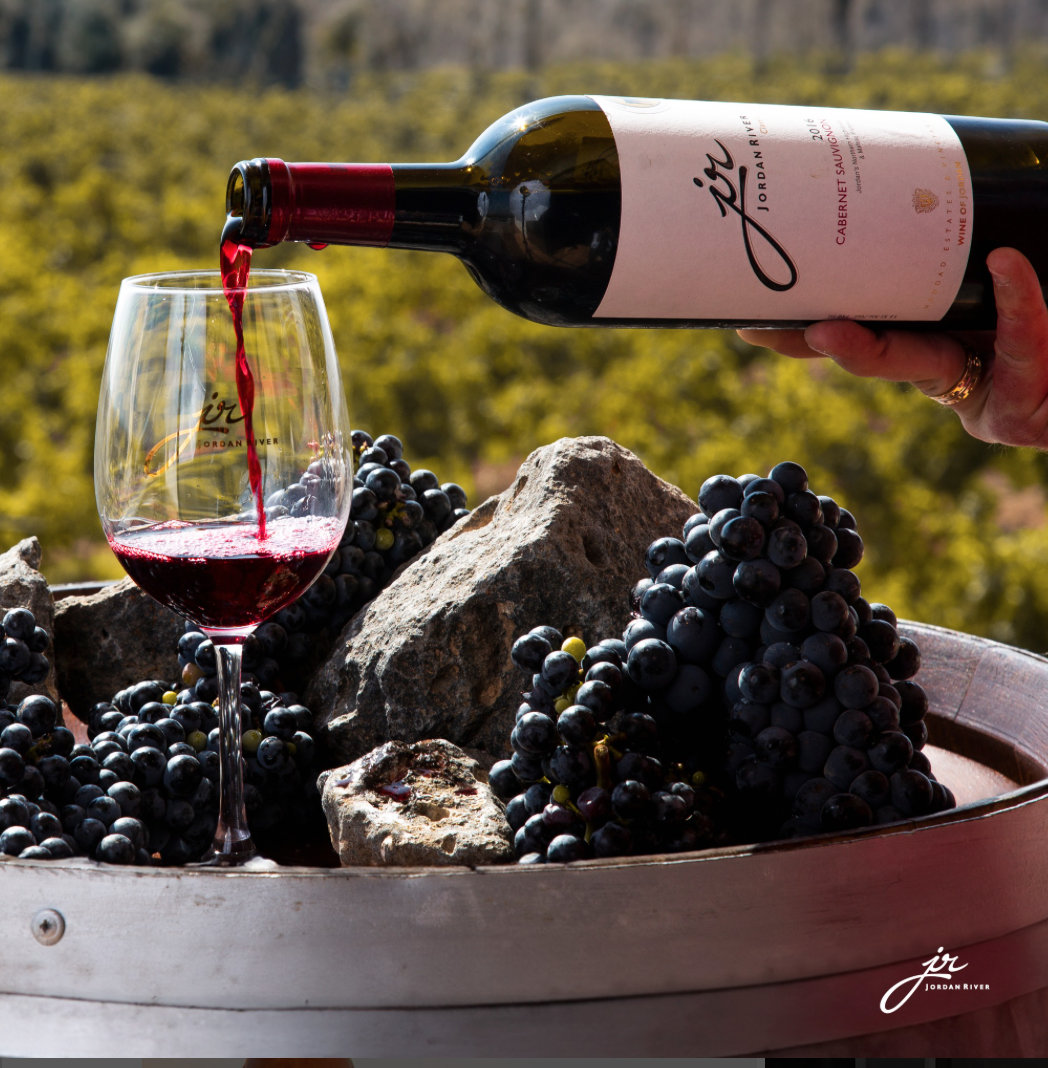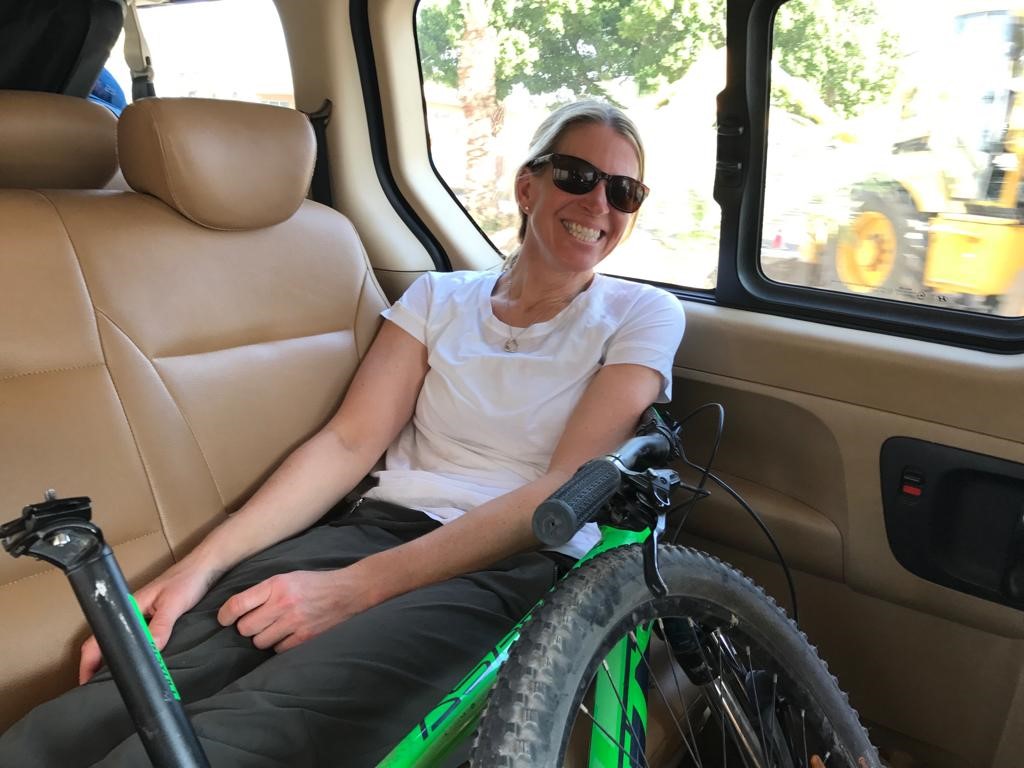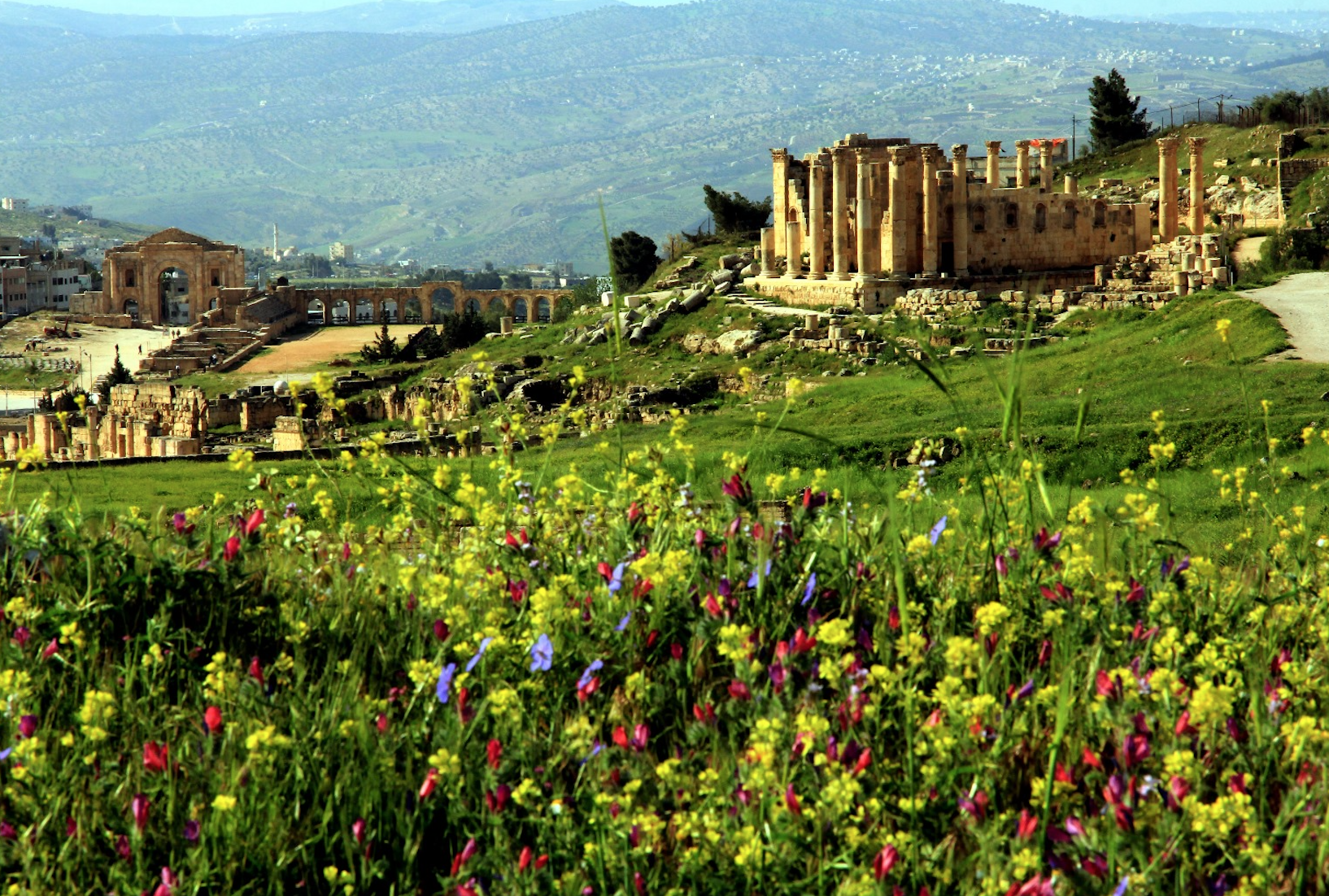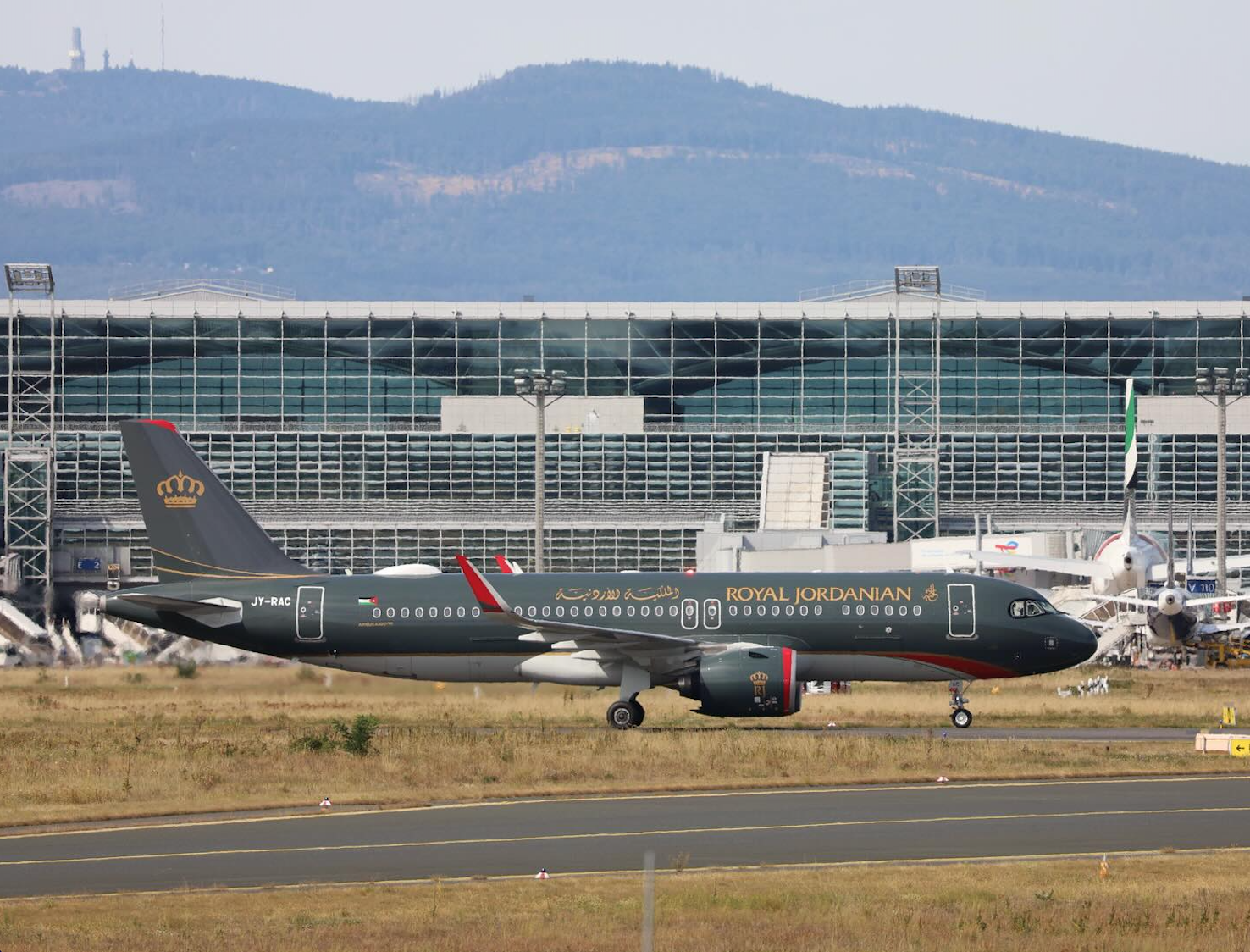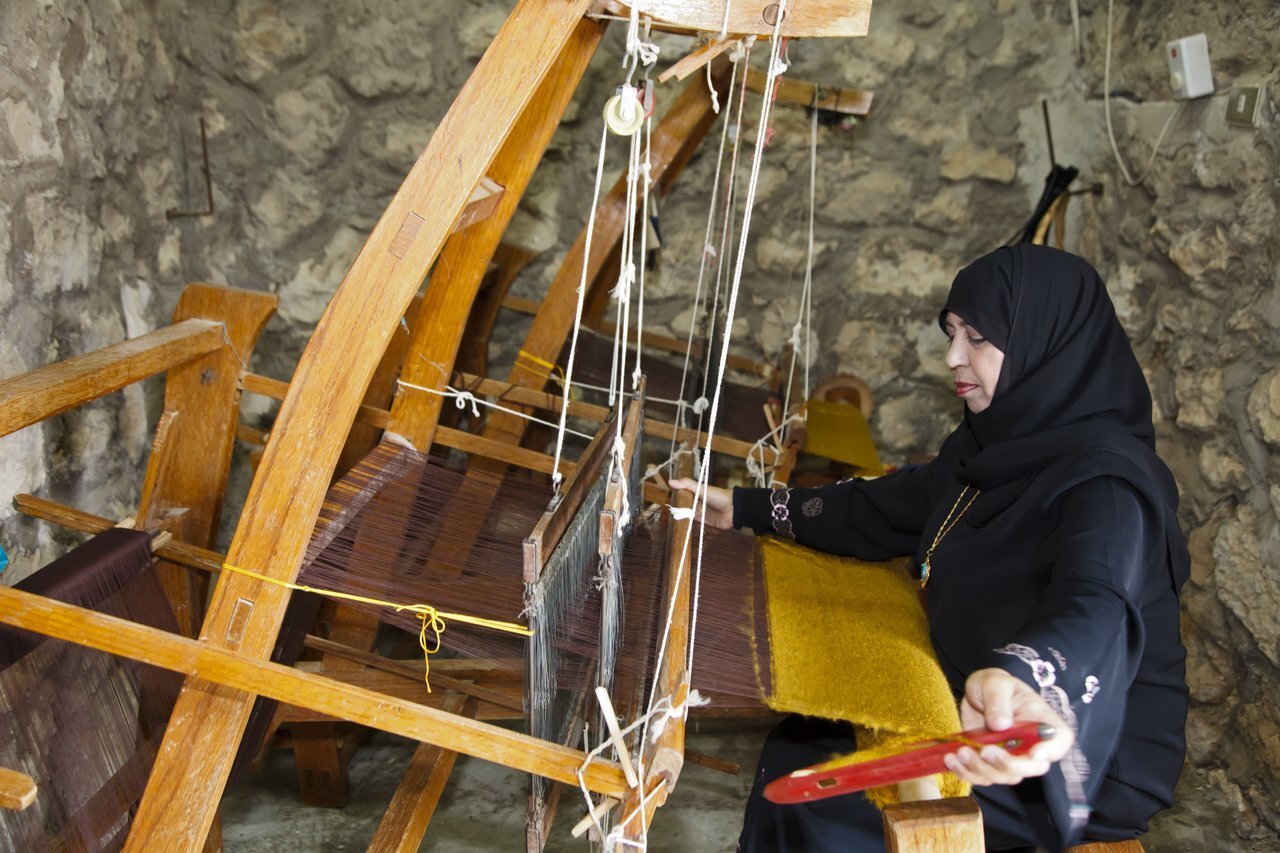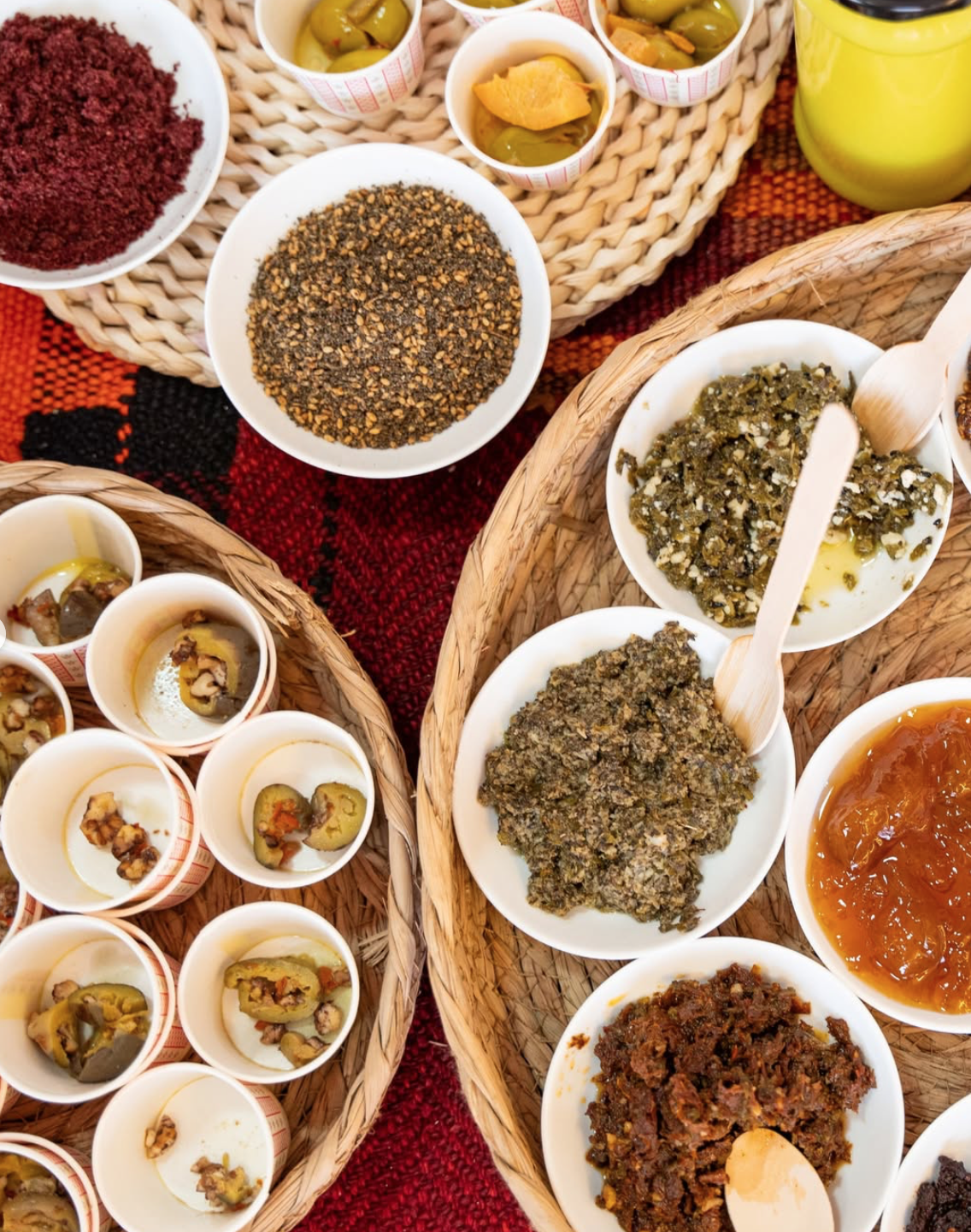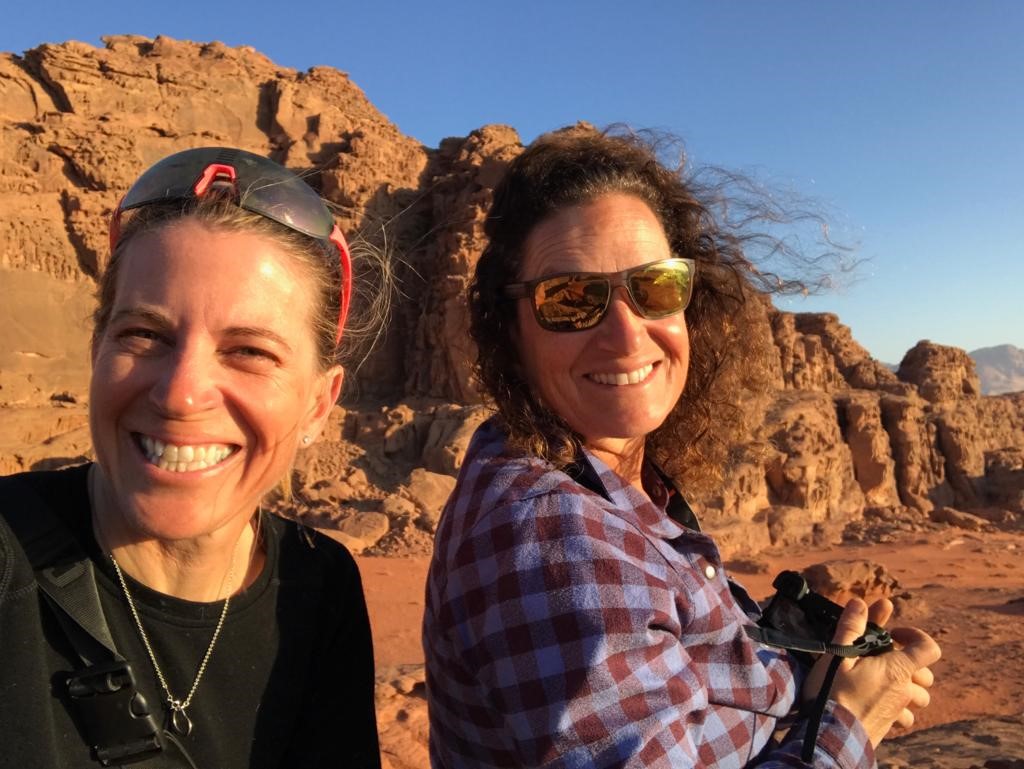
On November 13, 2019, Amy Jurries departed from Um Qais on a 454-mile bike ride on the Jordan Bike Trail, reaching her final destination of Aqaba on the Red Sea. This 13-day bike ride is comprised of 12 stages and passes through three regions of the country (Northern, Central and Southern).
“Lower the pressure on your tires and you become a camel,” Ali, owner of Rainbow Camp in Wadi Rum, told us as he dropped us back on the Jordan Bike Trail. “And don’t worry—falling off your bike is just like falling off a camel,” he tried to reassure us. “It won’t hurt thanks to all the sand!”
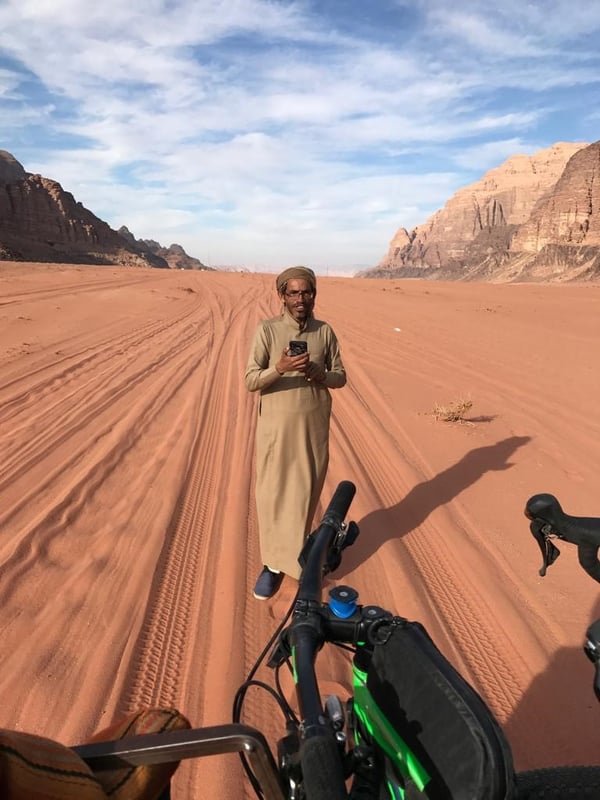
Not two feet from leaving the truck and waving goodbye to Ali were we off our bikes and pushing again. For two days now we have been crossing the southern desert on our way towards Aqaba, trading the mountainous wadis for sand to slow our progress. The closer we rode to Wadi Rum, the deeper it got. Camel prints floated on top of the deep Jeep tracks next to a few swerving tire tracks from other riders, adding insult to injury. Camels we were not.
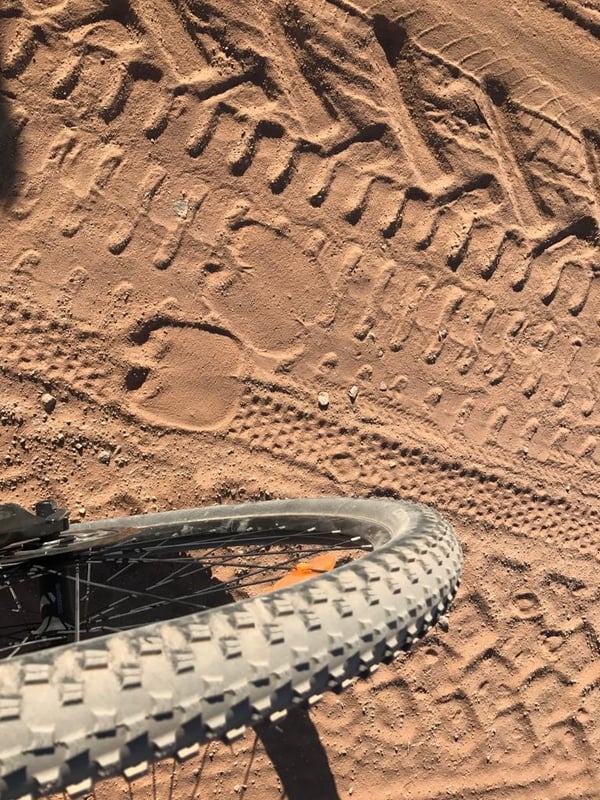
Saying goodbye to Abu Subah’s family yesterday, we spent the majority of the morning battling the sand and rolling over salt flats, with the dome like mountains of The Rum floating tantalizingly in the distance, just out of reach. After dumping what seemed like gallons of sand out of our shoes to make room for our toes again, we rode the final miles to Rum Village on the paved Tourist Road that heads into the park.
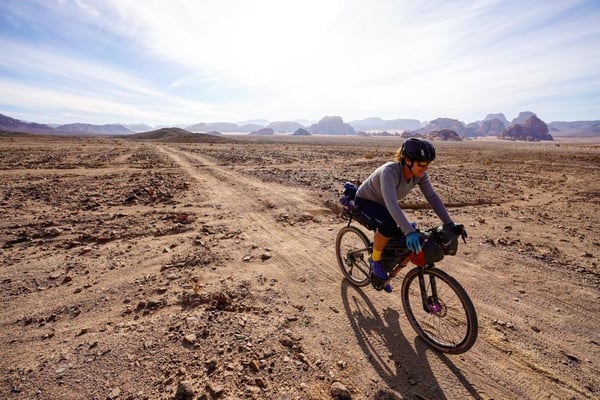
T.E. Lawrence’s granite and sandstone cliffs "sheering in like a thousand-foot wave towards the middle of the valley” gained protected status in 1988 and remain blissfully undeveloped apart from the small camps where you can spend the night. Virtually everyone living in and around Wadi Rum is of Bedouin origin, like Abu Subah and his family—extremely hospitable people who are largely responsible for developing Wadi Rum into a now popular tourist destination.
Ali, who owns Rainbow Camp with his brother Sulaimon, met us in Rum Village to drive us the six kilometers across the sand to camp. My first time to Wadi Rum was back in 2013 and at that time, really only one Bedouin-style camp for visitor’s existed—Captain’s Camp. Ali told us he and his brother were just getting started back then. On my second visit last April and again this trip, I was amazed at not only how much Rum Village itself has grown with more shops and houses, including a hostel catering to tourists, but also the number of camps to choose from to explore Wadi Rum for a night or two.
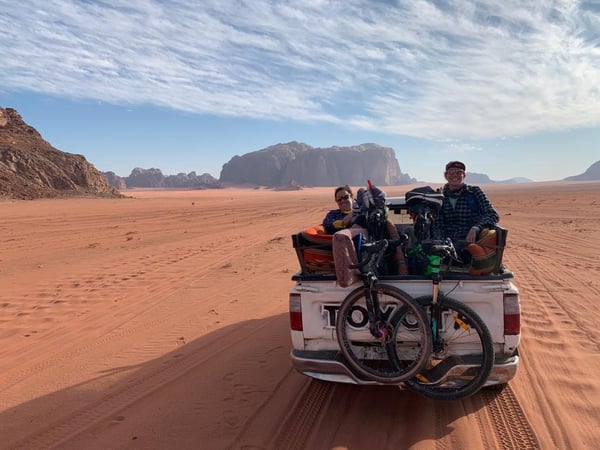
Climbing into the back of the Toyota Hilux with our bikes, we bounced our way across the vast sea of read sand, watching as camel caravans lumbered by and trucks roared in all directions taking red keffiyehs wearing tourists to visit ancient rock drawings or unique natural formations.
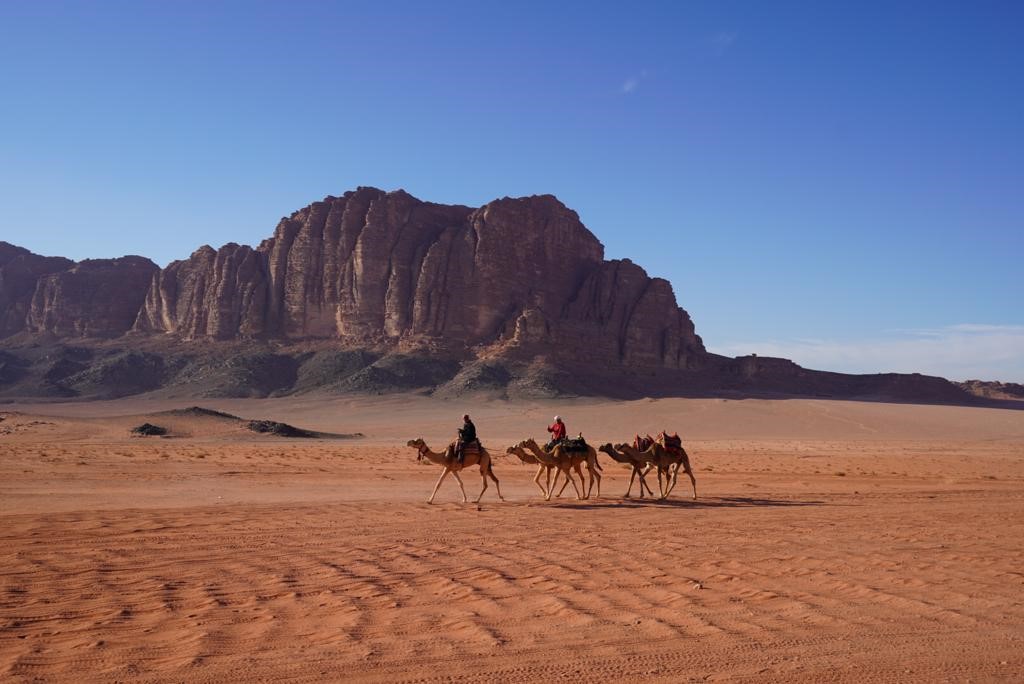
As we pulled through the gates of Rainbow Camp, we were pleasantly surprised to find out only one other person was staying that night—Frank from Germany. The next night, 55 people would be at camp so we were even more thankful to for the experience of near solitude in the desert.
Rainbow Camp is gorgeous, with over two dozen traditional Bedouin style tents housing beds for two-three people, a main communal tent with tables and a fire pit, modern and extremely clean bathrooms with flushing toilets and hot showers, all nestled within a circle of sandstone buttes that are perfect to clamber up for sunrise and sunset. Ali and his brother are rock climbing and hiking guides, so offer numerous adventures for anyone who visits.
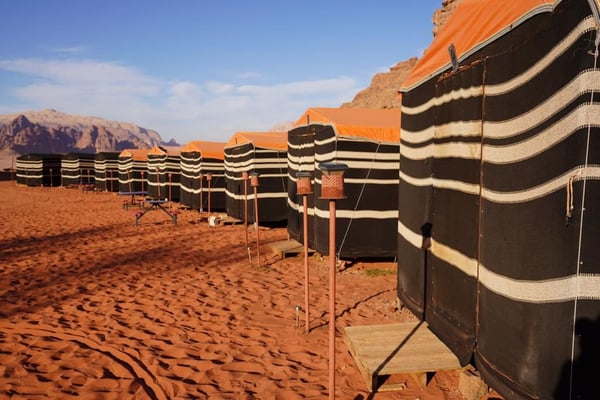
After a quick shower, Berne and I camped ourselves on top of the highest butte to watch the sun go down. Sunsets in Wadi Rum are hard to beat. That deep orange glow contrasted by the red sandstone and dark granite patina is almost otherworldly. As I watched the glowing orb make its final dip behind the sea of craggy mountains floating in the deep red sand in front of me, I acknowledged how lucky I was to be able to make it back to one of my favorite places on Earth yet again and hoped it wouldn’t be the last. There is something about the vastness and haunting beauty of Wadi Rum and indeed all of Jordan that finds its way deep into the soul, leaving you wanting more.
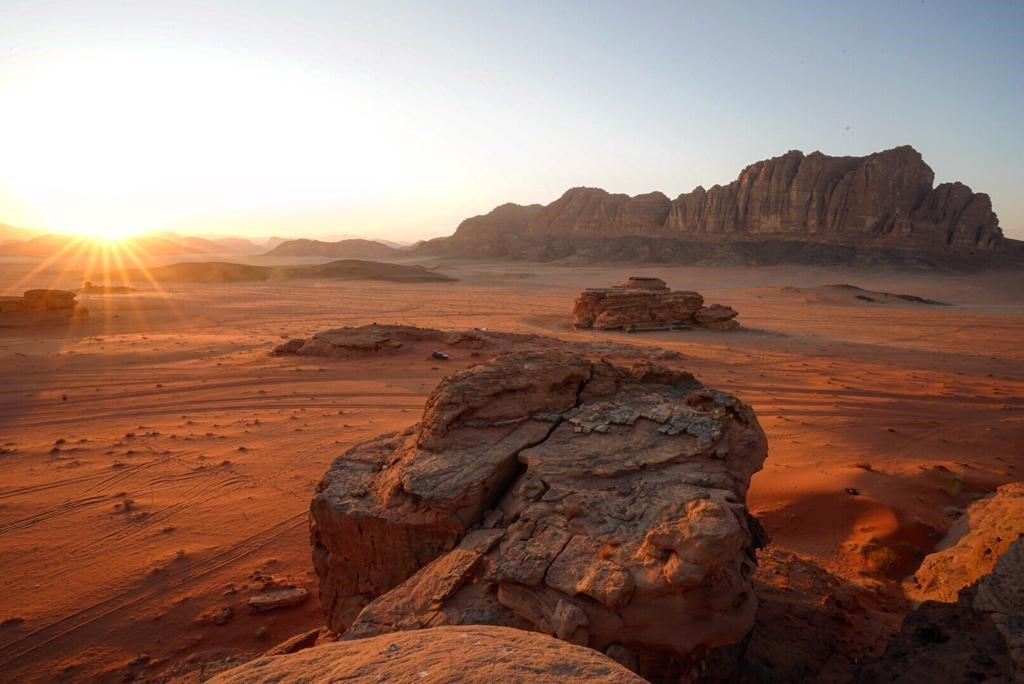
We feasted on a traditional grilled chicken dinner before enjoying some Bedouin whiskey (sweet tea) while watching some Bedouin television (the fire). I headed back up the rock in the dark to gaze at the Milky Way and zillions of stars, with the glowing lights of Aqaba in the distance. I worried as it seemed like so many miles of sand and mountains stil lay between us and those lights, a challenge yet to come.
As my new Arabic name is Shuruq (meaning sunrise), I figure it is now my obligation to see as many sunrises as possible, so woke early and crawled back up to the top of the rock to watch the pale pink and orange glow slowly overtake the mountaintops. At breakfast, Sulaimon looked at our planned route out of the desert and showed us the Bedouin shortcut that would cut a large chunk of sandy mileage off our day. Alhamulillah for Bedouin shortcuts!
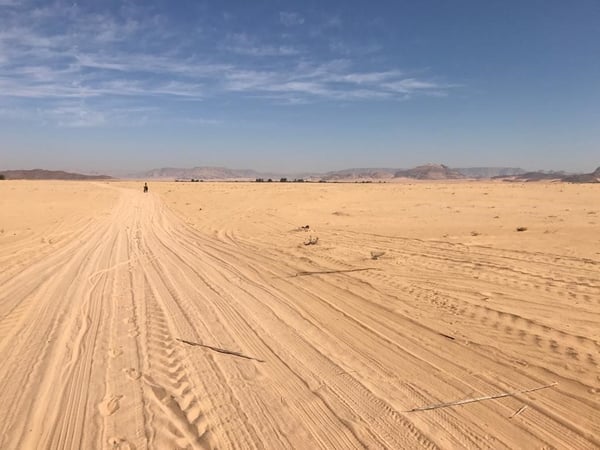
A couple of hours and miles of struggling through deep sand after Ali dropped us off, we finally found the cutoff. As we pushed our bikes through even deeper sand and rocks, however, we weren’t exactly sure if it really saved us time in the end. At that moment I thought to myself that T.E. Lawrence was lucky he had camel and not a bike as he criss crossed the desert for years.
But soon enough, after one last sand dump out of the shoes, we hit the main road that goes downhill all the way to Aqaba and the official end of the Jordan Bike Trail.
Subscribe to the blog for more on #AmyBikesJordan!


